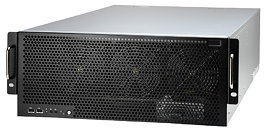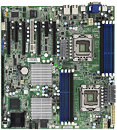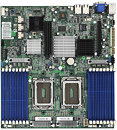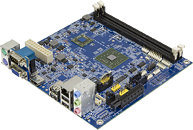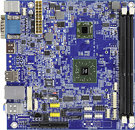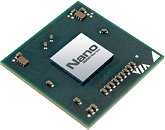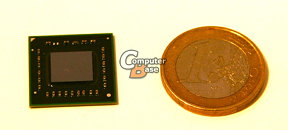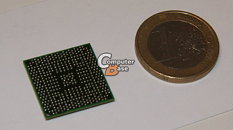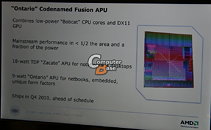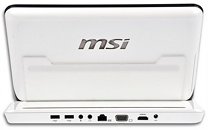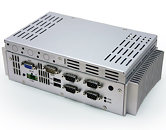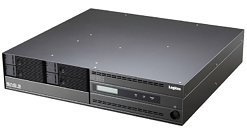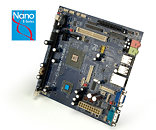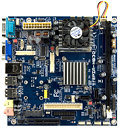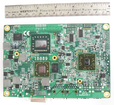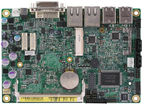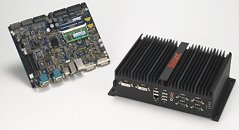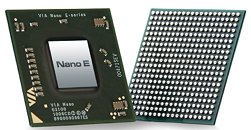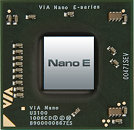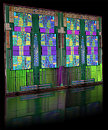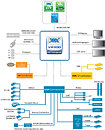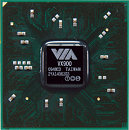
Gigabyte AMD Fusion ''Brazos'' Mini-ITX Motherboard Pictured
The first motherboard that brings the AMD Fusion "Brazos" platform to nettops was pictured, the GA-E350V-USB3, which is a mini-ITX motherboard that makes use of AMD Fusion E-350 accelerated processing unit (APU), and Hudson M1 chipset. AMD is targeting the nettop and HTPC markets with such motherboards, also as competitors to Atom and new Pentium Dual-Core (LGA1156/LGA1155) desktops. The GA-E350V-USB3 makes use of Gigabyte's Ultra Durable 3 construction that makes use of a PCB with 2x copper layers, solid-state capacitors, low RDS (on) MOSFETs, and ferrite core chokes.
The board uses a 3+2 phase power design. The Fusion E-350, like the Intel Atom, is hard-wired to the board, and cooled by a small fan-heatsink. It connects to two DDR3 DIMM slots for single-channel DDR3-1800+ MHz memory. The lone expansion slot is a PCI-Express 2.0 x16 (electrical x8). The Fusion APU packs two x86-64 cores clocked at 1.60 GHz, and an AMD Radeon HD 6310 graphics processor that features 80 stream processors, and clock speed of 500 MHz. Connectivity include four SATA 3 Gb/s ports, 8-channel HD audio, two USB 3.0 ports, display connectivity includes DVI, D-Sub, and HDMI. Pricing and availability are not known, as AMD didn't officially launch the platform.
The board uses a 3+2 phase power design. The Fusion E-350, like the Intel Atom, is hard-wired to the board, and cooled by a small fan-heatsink. It connects to two DDR3 DIMM slots for single-channel DDR3-1800+ MHz memory. The lone expansion slot is a PCI-Express 2.0 x16 (electrical x8). The Fusion APU packs two x86-64 cores clocked at 1.60 GHz, and an AMD Radeon HD 6310 graphics processor that features 80 stream processors, and clock speed of 500 MHz. Connectivity include four SATA 3 Gb/s ports, 8-channel HD audio, two USB 3.0 ports, display connectivity includes DVI, D-Sub, and HDMI. Pricing and availability are not known, as AMD didn't officially launch the platform.

